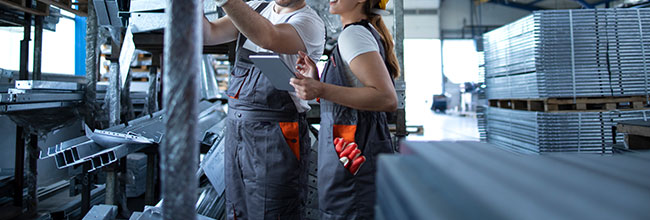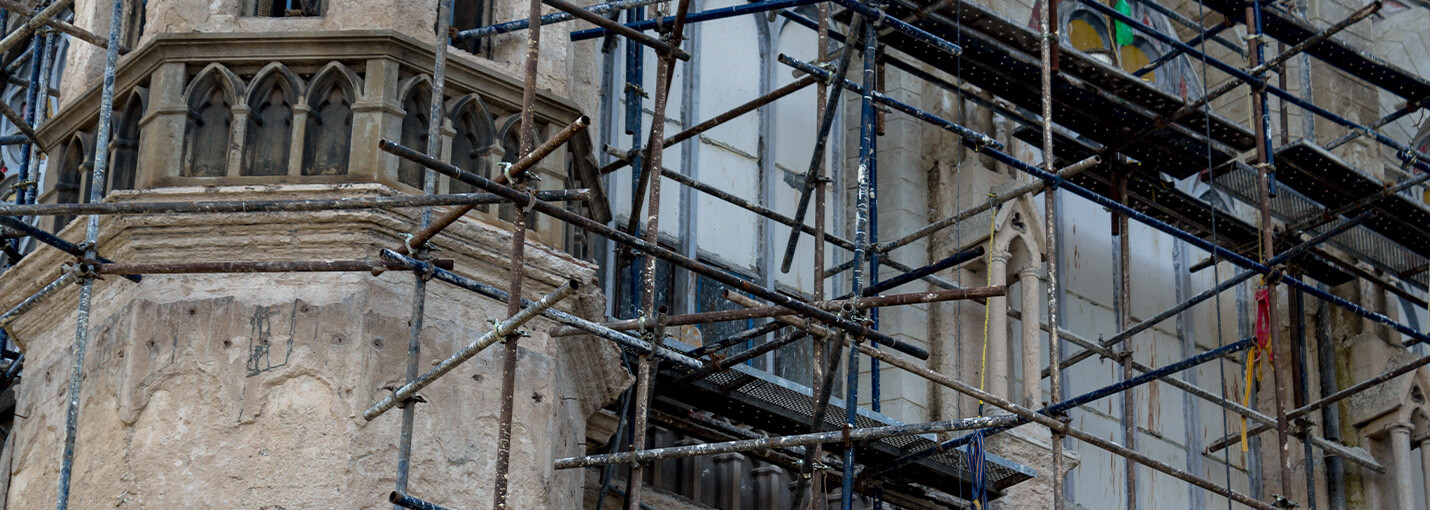Asbestos Exposure and Elevator Installers | Risks and Prevention
The Unforeseen Dangers of Asbestos Exposure in Elevator Installation and Maintenance
When we consider the hazards that workers in various industries face daily, we often think about the immediate risks — a fall from a significant height, a burn from a hot surface, or an injury from a faulty machine. However, some dangers lurk unseen, posing a significant health risk over time.
Asbestos, a group of naturally occurring fibrous minerals, is one such hidden hazard. This blog delves into the risks associated with asbestos exposure, particularly for elevator installers, and emphasizes the need for rigorous safety measures.
!
If you believe that you were exposed to asbestos, even as a child, speak to a healthcare provider about tests and screening to help diagnose lung-scarring and screen for asbestos-related diseases.
Understanding Asbestos
Asbestos has been a popular material in various industries due to its remarkable properties such as heat resistance, corrosion resistance, and excellent electrical and sound insulation. These features made it an ideal component in numerous applications, including construction materials like plaster, cement, vinyl, and tiles, as well as in insulators in electrical appliances and even textiles.
The risk, however, lies in its microscopic, odorless, and tasteless fibers, which, when inhaled or ingested, can embed into bodily tissues and cause damage over time, leading to serious health issues like asbestosis, lung cancer, and mesothelioma. Further, elevator construction workers are more likely to construct asbestos-related pleural disease.
Asbestos has no taste or smell.
You may not know you’re breathing it.

What are the different types of asbestos?
Asbestos refers to six unique minerals that belong to two groups: Serpentine and Amphibole. These six types of asbestos have been recognized for their industrial use:
Chrysotile: Also known as white asbestos, Chrysotile is the most commonly used form of asbestos and belongs to the Serpentine group. It has been used in roofs, ceilings, walls, and floors of homes and businesses.
Amosite: Often referred to as brown asbestos, Amosite is a member of the Amphibole group. It has been commonly used in cement sheets, pipe insulation, and structural fireproofing.
Crocidolite: Known as blue asbestos, Crocidolite is also an Amphibole. It’s considered the most dangerous form of asbestos due to its fine fibers that are easily inhaled. It was commonly used to insulate steam engines and in spray-on coatings.
Tremolite: While not used commercially, Tremolite contamination can be found in Chrysotile asbestos, talcum powders, and vermiculite. It belongs to the Amphibole group.
Anthophyllite: This is one of the rarest forms of asbestos and belongs to the Amphibole group. It was not often used in commercial products but could be found as a contaminant in composite flooring.
Actinolite: Actinolite asbestos is dark in color, ranging from green to brown. It was not typically used in asbestos products, but it may be found as a contaminant. It belongs to the Amphibole group.
Each type of asbestos can be harmful when inhaled or ingested. As such, any suspected asbestos in buildings, especially in those built before the 1980s, should be dealt with by a professional abatement company to ensure safe removal and disposal.
The health risks of asbestos exposure can include:
| Mesothelioma: cancer of the mesothelium, the thin layer of tissue surrounding the body’s organs. This cancer is only known to be caused by asbestos exposure. | Lung cancer |
| Laryngeal cancer: cancer of the larynx (section of the throat called the voicebox) | Ovarian cancer |
| Stomach cancer | Colon cancer |
| Pharyngeal cancer | Asbestosis: a chronic lung disease associated with asbestos exposure |
| Chronic Obstructive Pulmonary Disease (COPD) | Atelectasis (collapsed lung) |
| Pleural effusion (collection of fluid around the lungs) | Pericardial effusion (collection of fluid around the heart) |
Elevator Installation and Maintenance Hazards
In the context of elevator installation and maintenance, asbestos exposure can be a real concern. Asbestos was widely used in older buildings for insulation, fireproofing, and soundproofing, areas that elevator installers could easily come into contact with during their work. Whether they are drilling into walls, removing old elevator components, or installing new equipment, they could unknowingly release and inhale these harmful fibers, setting the stage for long-term health risks.
While modern regulations have significantly curtailed the use of asbestos, the threat remains due to the sheer amount of pre-existing asbestos in older structures. Workers tasked with renovating, repairing, or demolishing these older buildings may become exposed to asbestos materials, and even asbestos removal itself often releases harmful fibers into the air. As such, construction industry standards, like those outlined in the Occupational Safety and Health Administration (OSHA) 29 CFR 1926, are imperative for safe operations.
“All forms of asbestos are carcinogenic to humans.” 1
OSHA standards specifically address asbestos hazards and provide guidance for the construction industry. For example, 1926.1101 deals directly with asbestos and outlines mandatory safety practices, protective measures, and medical surveillance requirements. Additionally, OSHA provides comprehensive training and resources for construction workers, including elevator installers, to navigate the risks of asbestos exposure safely.
Complementing OSHA’s regulations, other organizations provide standards and practices to further safeguard against asbestos exposure. The American Society for Testing and Materials (ASTM) outlines practices for visual inspection of asbestos abatement projects, comprehensive building asbestos surveys, and maintenance, renovation, and repair of installed asbestos cement products. Elevator installers can significantly benefit from these detailed, industry specific guidelines.
Asbestos causes six times more lung cancer than malignant mesothelioma.**About 38,000 people die each year of mesothelioma (cancer of the respiratory lining). (NIH) 2 3 |
Elevators aren’t going anywhere but up. Unfortunately, asbestos exposure from decades ago can cause health problems decades later.
Elevator installation and maintenance is still an ongoing and thriving job. You can check out some open positions, but be sure if you do take on this role to be cautious about the hazards of asbestos you may encounter. Areas like lift shafts and motor rooms can still be overlooked despite the modern safety precautions now in place.
People who worked in these industries prior the mid-1980s have a higher risk of developing asbestos-related diseases:
| Construction | Factories | Foundries | Refineries | Shipyards | Mining / Milling |
| Demolition | Insulation | Steelworkers | Pipe Fitting | Shipbuilding | Mechanics |
 |  |  | |||
| Roofing | Textiles | Iron workers | Boilers | Firefighting | Brake Repair |
| Flooring | Cement | Electricians | Gasket Repair | Railroad | HVAC |
Unfortunately so do their families.
What are the dangers of asbestos in the workplace?
Asbestos in the workplace poses serious health hazards, as prolonged exposure can lead to deadly diseases like asbestosis, lung cancer, and mesothelioma. Inhalation of asbestos fibers can cause damage to the lungs and scar the lung tissue, often leading to chronic respiratory issues.
Industries involving older buildings and construction often involve asbestos exposure.
Especially at risk are workers in industries such as construction (44%), carpenters (17%), and painters (10%), where asbestos was widely used due to its heat and chemical resistance properties. U.S. Navy boats were also built with asbestos; as such, workers (especially those in confined spaces) should take precautions. Workers in these industries should always use personal protective equipment (PPE) to safeguard against these hazards.

The Hidden Dangers in Older Buildings
While we’ve discussed occupational exposure to asbestos, particularly for elevator installers, the danger isn’t confined to just the workplace. Many older buildings, including homes built during the 1920s and beyond, may still house this hazardous material. Exposure to asbestos is a risk faced not only by those employed in its removal but also homeowners and professionals renovating these aging structures.
Asbestos, valued for its heat-resistant and insulating properties, was a common component in 20th-century construction. It was used in various materials such as ceiling tiles, wall and attic insulation, furnace insulation, and vinyl floor tiles, to name a few.
When the Environmental Protection Agency (EPA) banned most asbestos products in 1989, many structures built before this time remained contaminated. A disturbing fact is that much of this asbestos was found to be “friable”—damaged or degraded and capable of crumbling into small particles, which can become airborne and present a significant health hazard.
“Some asbestos fibers may bypass…your body’s natural defenses…and lodge deep within your lungs. Those fibers can remain in place for a very long time and may never be removed.”Source: American Lung Association |
Demolition of older buildings can involve exposure to many asbestos materials, including in thermal insulation, electrical insulation, floors, roofing, adhesives, walls, cement, and many other places. Ductwork of all kinds, including elevator shafts, electrical panels, insulation, etc., could contain the mineral.

Nearly every building constructed before the mid-1980s contained asbestos products and building materials.

If you reside in a house built between the 1920s and 1970s, be cautious when planning renovations. Disturbing asbestos-containing materials can make them airborne and dangerous. If you suspect the presence of asbestos, it’s advisable to reach out to your local health authority and consider professional asbestos testing services.
Should I check my home or property for asbestos?
If your home or property was built before the 1980s, it’s wise to check for asbestos, especially before undertaking any renovation or demolition projects. Undisturbed asbestos generally doesn’t pose a risk, but once airborne due to disturbance, the fibers can be inhaled and cause serious health problems. Contact a licensed professional to safely inspect and test your property for asbestos-containing materials.
Does cement contain asbestos and where else is asbestos found in roofing?
Yes, roofing cement, particularly that used in properties built before the 1980s, may contain asbestos due to its fire-resistant properties. Asbestos can also be found in roofing shingles, flashing, felts, and soffit boards. As such, during roof repairs or replacements, it’s crucial to use professionals who can safely handle these materials and prevent asbestos exposure.
Some forms of older cement, particularly those produced before the 1980s, may contain asbestos to increase durability and resistance to heat.
How do I remove asbestos ducting?
Asbestos removal is a high-risk job that should be done by trained professionals to ensure safety. Professionals follow strict regulations and use protective equipment to prevent asbestos fibers from becoming airborne during removal. If you suspect asbestos in your ducts, it’s essential to avoid disturbing it and promptly contact an asbestos abatement specialist to handle the removal.
Sharing a home or vehicle with someone wearing asbestos-tainted clothing puts you at risk of asbestos-related diseases.4
Health Risks and Legal Repercussions of Asbestos Exposure
Asbestos exposure carries significant health risks, with the potential to develop severe diseases like mesothelioma, lung cancer, and asbestosis. Often, symptoms mimic those of other respiratory conditions, making diagnosis difficult. However, once diagnosed, various treatment options are available, including surgery, radiation therapy, and chemotherapy. Construction workers, particularly those dealing with older structures, are at an increased risk due to the prevalence of asbestos in these buildings.
Smokers exposed to asbestos are up to 50 times more likely to develop lung cancer than nonsmokers who aren’t exposed.5 |
The latency of asbestos diseases (symptoms can take 20-50 years to appear)
The tragic reality is that the asbestos fibers, once lodged in the body, can take up to 50 years to disappear. Many people get a “clean bill of health” upon retirement but develop an illness years or even decades later.
Several health studies have shown that the spouses of asbestos workers are at an elevated level of risk for asbestos illnesses like lung cancer.6 7 8 9
Even second-hand asbestos exposure is asbestos exposure.
Second-hand asbestos exposure, such as those exposed to asbestos as children, may only now see symptoms. In fact, second-hand exposure accounts for 20% of asbestos illnesses around the world. Even minor or occasional second-hand exposure can be dangerous. Many legal options are open for those suffering from second-hand exposure.
Asbestos Bankruptcy Trusts (compensation for asbestos claims, without a lawsuit)
The asbestos industry’s history is marred with unethical practices that kept the dangers of asbestos concealed for decades. It was only in the 1970s when the devastating evidence about asbestos dangers became public. Ironclad proof showed that asbestos companies were aware of the deadly consequences of their products, yet they hid this knowledge to safeguard profits.
As a result of ongoing litigation, courts ordered asbestos companies to set aside billions in trust funds to compensate those affected by asbestos-related diseases.
Do You Qualify For Compensation?
Quickly and easily find out how you were exposed by searching W.A.R.D., the largest asbestos database on the planet.
FREE SEARCH >These trust funds, borne out of the industry’s past deceit, offer compensation for those diagnosed with asbestos-related illnesses. Many victims are eligible for settlements without the need to file a lawsuit, and legal consultation from asbestos attorneys can help navigate the process. Those with claims related to illnesses caused by exposure to asbestos will likely see the fastest results.
A lawsuit is not always necessary, however, so be sure to speak with a competent legal representative to evaluate your options. The W.R. Grace Asbestos Trust, for example, can help workers exposed to asbestos from W.R. Grace products. This trust was designed to provide fair, equitable and substantially similar treatment for all PI Trust Claims that may presently exist or may arise in the future, according to its guidelines.
If you believe you’re showing symptoms of an asbestos-related illness, it’s crucial to reach out to a legal professional who can guide you to potential compensation resources. Whether the exposure occurred on the job, in the military, or even through indirect contact such as laundering clothes of a family member who worked with asbestos, there are legal avenues available.
Over $30 Billion is still available (No lawsuit. No fees unless you receive money. No risk.) Stake your claim.  |
Safe Practices and Moving Forward
The key to minimizing asbestos exposure lies in education, awareness, and the proper use of safety measures. Construction workers, including elevator installers, must be adequately trained in identifying potential asbestos-containing materials, safe work practices, and the use of personal protective equipment. Furthermore, routine medical check-ups can help monitor workers’ health and detect any early signs of asbestos-related diseases.
“Generally, those who develop asbestos-related diseases show no signs of illness for a long time after exposure.”Source: National Cancer Institute (NIH)10 |
Asbestos removal is ongoing. So are asbestos-related diseases.
In response to the health risks associated with asbestos, non-asbestos materials with similar properties have been developed to replace asbestos-containing materials (ACMs) in various applications. Over 60 countries have banned the use of asbestos, and manufacturers have adapted by using substances like non-organic fibers, synthetic rubber or plastic variants, and various types of minerals and fibers for gaskets and sealing products.
Asbestos cement and roofing products can be replaced with synthetic fibers, vegetable fibers, or cellulose fibers mixed with other substances. Asbestos storage tanks and pipes can be replaced with materials like cellulose, polyethylene, fiberglass, and certain types of pipes, while asbestos firefighting clothing has been replaced by high-tech or vacuum-deposited aluminized materials.
While there are many viable options now available, it’s necessary to still take precautions in older structures. Wearing protective gear and avoiding disturbing these fibers whenever possible is key.
AsbestosClaims.Law
At AsbestosClaims.Law, our mission to secure compensation for asbestos victims is more than professional; it’s personal.
Our founder, Justinian C. Lane, understands the devastating impacts of asbestos firsthand.
Both his grandparents and father, all asbestos workers, passed away from asbestos-induced cancers without realizing their eligibility for asbestos lawsuits or other forms of compensation.
We aim to prevent such tragic oversights by informing and guiding victims and their families through their legal options.
If you or your loved ones have suffered as a result of asbestos exposure, you could be eligible for considerable compensation. These funds could provide for medical treatments, asbestos removal services, and safeguard your health.
In addition, asbestos trusts offer compensation without the need for a lawsuit, providing a quicker, simpler path to justice.
Reach out to us at [email protected] or (206) 455-9190 for assistance with your claim. We offer compassionate listening, clear explanations, and we don’t charge a dime unless we win your case.
Beyond legal claims, we also advise on veterans’ disability, social security, and employment protection like workers’ compensation, FELA, and The Jones Act for maritime workers.
There’s no risk or cost to connect with our experienced team about your rights. Our commitment to your well-being means no fees unless you receive compensation.
| For further queries or concerns about asbestos, explore our website and YouTube page, featuring infographics, videos, and answers to common questions on asbestos-related topics. |
We’ve also introduced W.A.R.D., the Worldwide Asbestos Research Database. It’s the most comprehensive resource for asbestos-related information.
W.A.R.D. assists in pinpointing potential exposure scenarios, asbestos-containing products, and can indicate the types and potential amounts of compensation you may be entitled to receive.
Don’t delay — get in touch with us today!
1 IARC Working Group on the Evaluation of Carcinogenic Risks to Humans. Arsenic, metals, fibres, and dusts. IARC Monographs on the Evaluation of Carcinogenic Risks to Humans. 2012 ;100(Pt C):11-465. PMID: 23189751.
2 The current understanding of asbestos-induced epigenetic changes associated with lung cancer. , Cheng, Y.Y., Rath, E.M., Linton, A., Yuen, M.L., Takahashi, K. and Lee, K., 2020. Lung Cancer: Targets and Therapy, pp.1-11.
3 The current understanding of asbestos-induced epigenetic changes associated with lung cancer. , Cheng, Y.Y., Rath, E.M., Linton, A., Yuen, M.L., Takahashi, K. and Lee, K., 2020. Lung Cancer: Targets and Therapy, pp.1-11.
4 Anua, S.M., Semple, S., Shakri, S.F.M., Safuan, S., Mazlan, N. and Asri, A.A.M., 2019. A review of the take-home exposure pathway of workplace hazards. International Journal of Medical Toxicology & Legal Medicine, 22(3and4), pp.13-19.
5 Klebe, S., Leigh, J., Henderson, D.W. and Nurminen, M., 2020. Asbestos, smoking and lung cancer: an update. International journal of environmental research and public health, 17(1), p.258.
6 Ferrante, D., Bertolotti, M., Todesco, A., Mirabelli, D., Terracini, B. and Magnani, C., 2007. Cancer mortality and incidence of mesothelioma in a cohort of wives of asbestos workers in Casale Monferrato, Italy. Environmental Health Perspectives, 115(10), pp.1401-1405.
7 Miller, A., 2005. Mesothelioma in household members of asbestos‐exposed workers: 32 United States cases since 1990. American journal of industrial medicine, 47(5), pp.458-462.
8 Reid, A., Heyworth, J., De Klerk, N. and Musk, A.W., 2008. The mortality of women exposed environmentally and domestically to blue asbestos at Wittenoom, Western Australia. Occupational and environmental medicine, 65(11), pp.743-749.
9 İşten, B.H.S.T.O. and Maruziyetler, E.T., 2021. Exposures Moved from Work to Home as a Public Health Hazard.
10 National Cancer Institute (NIH), Asbestos Fact Sheet.